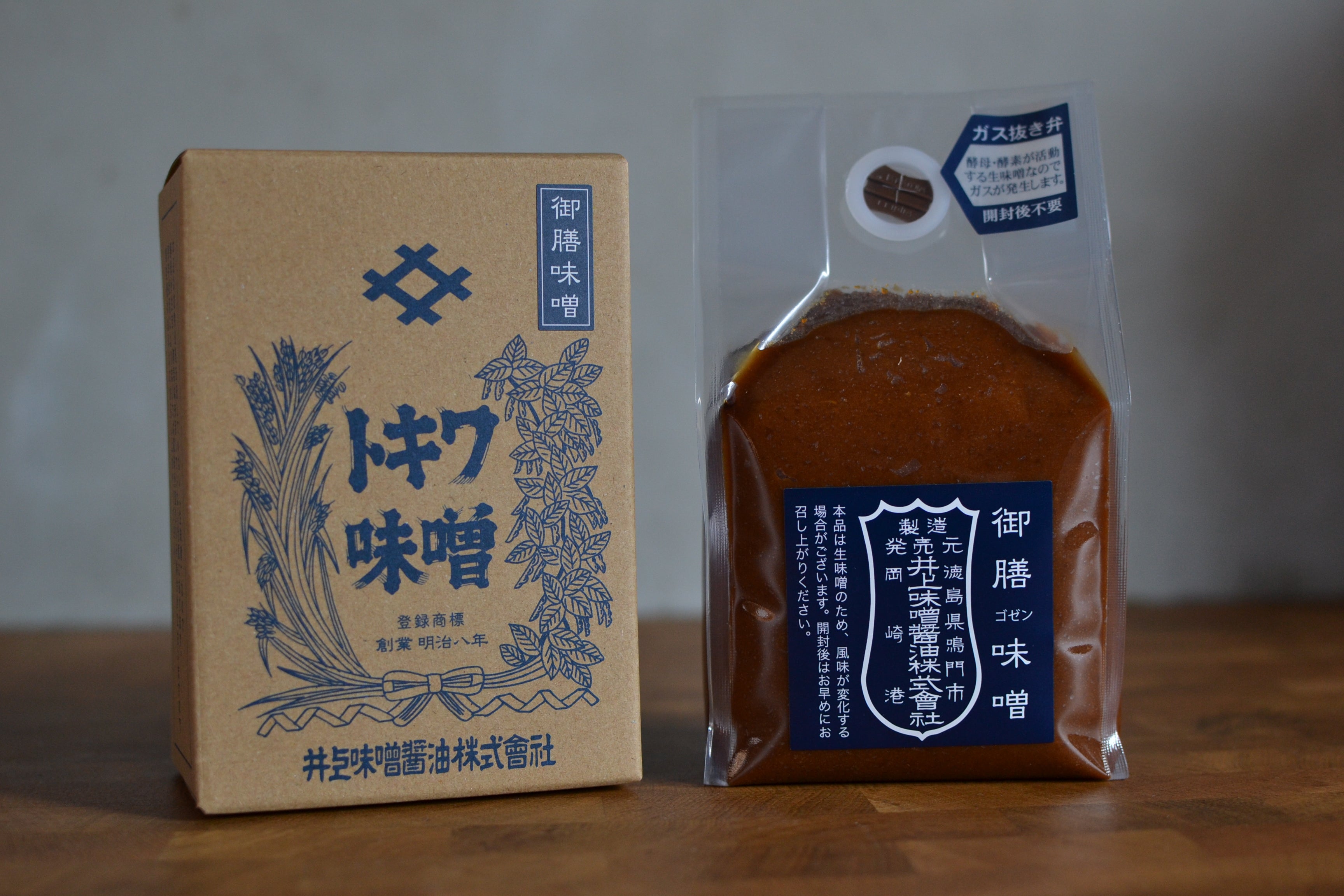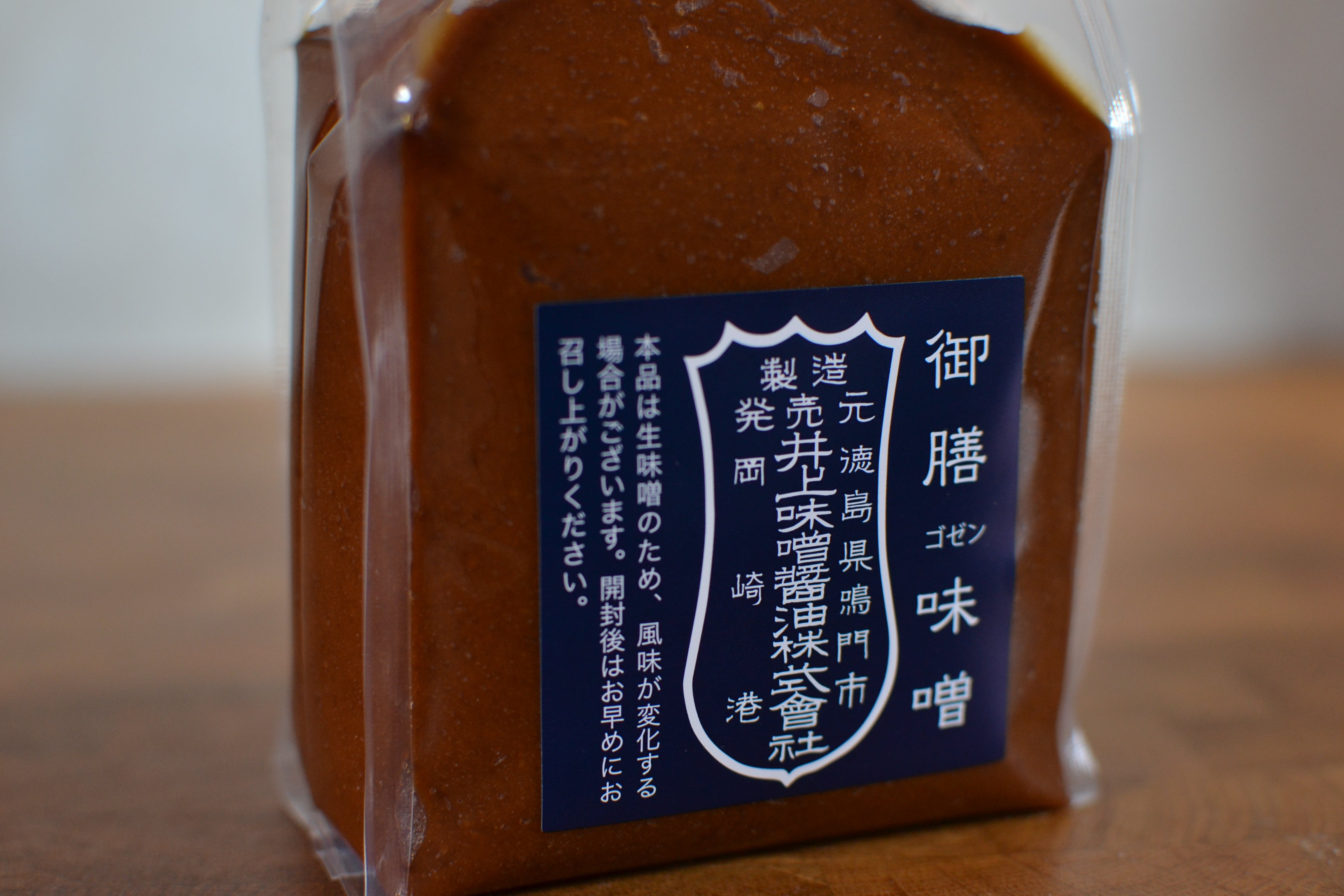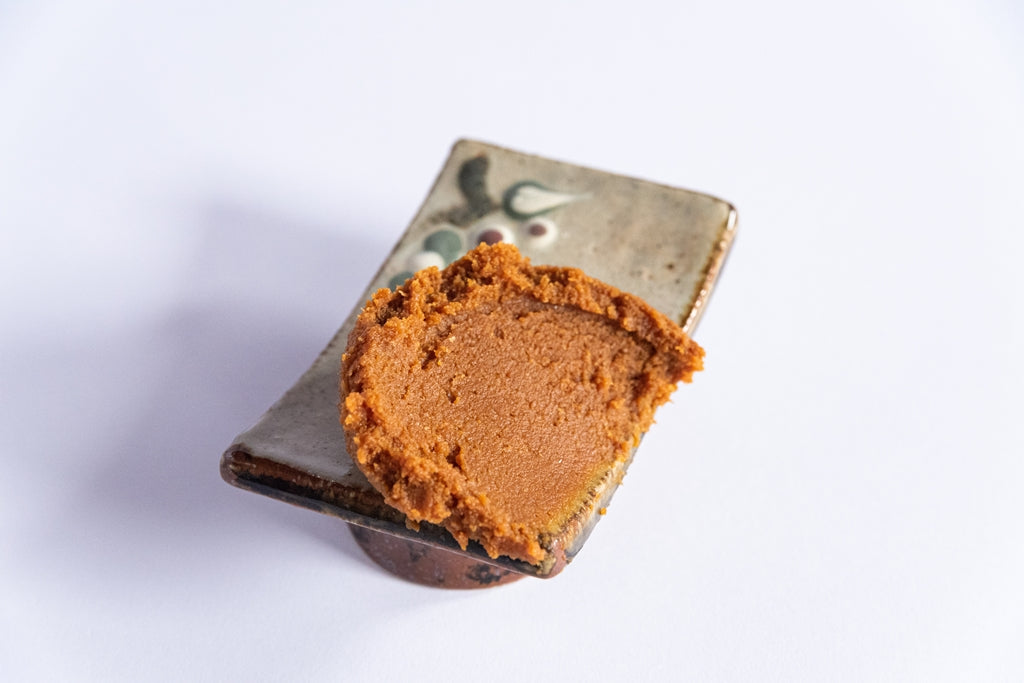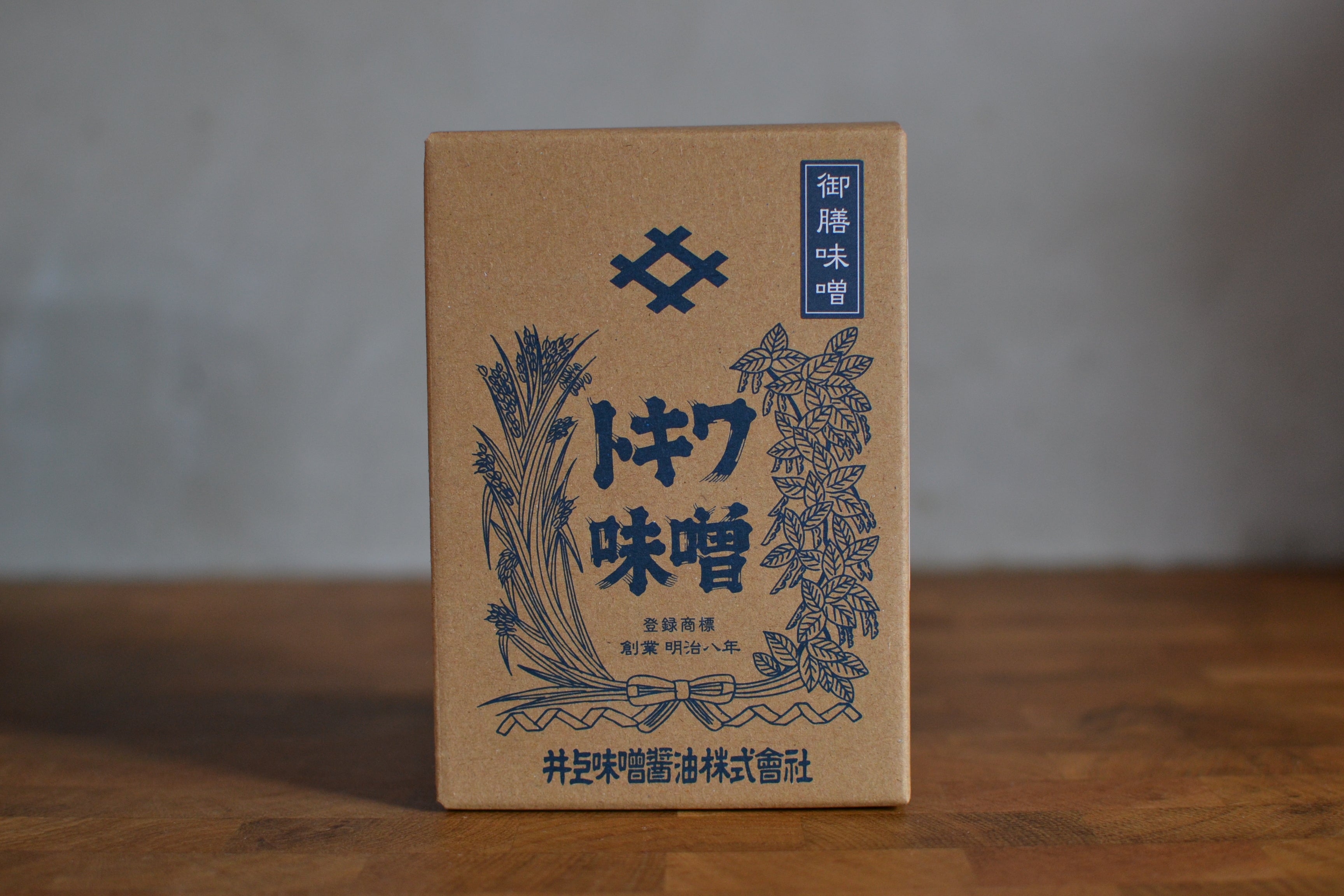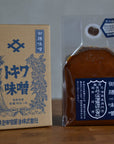

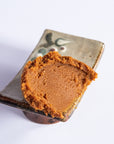


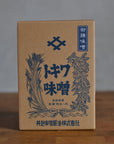

Inoue Miso Soy Sauce "Gozen Miso" Founded in 1875 A traditional delicacy offered to the feudal lords of Awa
This local miso from Tokushima originated from the dish that was served to Lord Hachisuka, the feudal lord of Awa Province.
With a good balance of sweetness and saltiness, and a solid richness and flavor, it can be used in a wide range of dishes, from miso soup with simple ingredients to pork soup, and performs well in all kinds of dishes. It goes particularly well with dried sardine stock, and its refreshing taste means you won't get tired of eating it every morning in miso soup.


For those who don't like miso soup during the hot summer months, how about vinegared miso made with dried sardines, thin green onions, and vinegar (sudachi juice)? It contains the same nutritional value as miso soup, so it is a recommended dish for growing children and easy to make for adults to enjoy with alcohol.
The reason why I fell in love with Inoue Miso

I have traveled all over the country and tried many different kinds of miso, but when I first encountered Inoue Miso, I was shocked by how delicious it was, and I still vividly remember how it completely changed my previous understanding of miso.
And yet, I have yet to come across a miso that surpasses this one.
During my direct interview, I learned what the secret to Inoue Miso's deliciousness lies in the fact that they value three things: "Morobuta Koji," "Carefully Selected Ingredients," and "Miso Storehouse and Wooden Barrels." I also learned that they do not go against nature, but rather make full use of Naruto's environment and climate to support the fermentation process.
This authentic miso, made by traditional handicrafts, is used in Michelin three-star restaurants and traditional Japanese restaurants in Japan and France and is highly popular.
It is also traded as a luxury seasoning in France.
Awai Shoten has begun selling this "honkaku miso," which has received high praise from professional cooks and chefs, in the hope that food-conscious customers will become aware of it and enjoy it as an important ingredient in their daily diet and on special days.
Once you start using it, you won't be able to put it down; try this elegant, rich, one-of-a-kind flavor.
About Inoue Miso Soy Sauce
Since our founding in 1875, we have continued to make miso by hand, with an unchanging "old-fashioned taste" that combines the natural features of Naruto, the bounty of the four seasons, and the wisdom and ingenuity of our ancestors.
[Three things that Inoue Miso Soy Sauce values]
Traditional "Morobuta Koji"

The rice koji, which is essential to creating the flavor of Inoue Miso, is grown by hand in a wooden box called a "Morobuta" that has been handed down for many years, while keeping the koji mold close to it for about 40 hours.
100% domestically produced rice, soybeans, and salt

They carefully select domestically produced rice, soybeans, and salt that are suitable for brewing, but due to teachings passed down through the generations, they do not disclose the brand or combination of ingredients.
Natural brewing using "miso brewery and wooden barrels"

In order to restore the brewing environment lost due to the earthquake, we built a new "brewery with mud walls" in April 2023. In addition to connecting the traditional techniques of "miyadaiku" and "plastering craftsmen" to the future, we have also been able to revive our miso making. In addition, the natural fermentation in "cedar barrels" that have been handed down since the company was founded in 1875 creates a rich flavor and aroma. In order to continue brewing the traditional taste, we asked "Tsukasa Seitaru" to purchase three new wooden barrels for brewing in 2015.
Please try our carefully crafted miso, made without compromise and in close proximity to nature.
*Recipe reference : Pork soup <pork, burdock, carrot, daikon radish, konjac, white onion>
1. Add the dashi and vegetables other than the white onion and heat. Once boiling, add the pork and simmer over medium heat until the vegetables are soft. 2. Add the white onion, turn off the heat, wait a moment, and then dissolve the miso. *It tastes better if you cut the pork belly block thickly.
◆Tempura scraps miso soup <Naruto Kintoki (sweet potato), komatsuna, tempura scraps>
1. Boil Naruto Kintoki potatoes in dashi and then boil Komatsuna. 2. Turn off the heat, take a breath, and then dissolve the miso. 3. Sprinkle with tempura scraps before serving. * Be careful not to overcook the sweet potato, as it will fall apart. * You can also use tempura instead of tempura scraps.
Tips for making miso soup <br>1. A good rule of thumb for one serving is 150-200cc.2. Miso should be 12% of the stock.3. Skim off the scum that comes off the ingredients.4. Turn off the heat and wait a moment before dissolving the miso, then taste and adjust accordingly.5. Do not bring to a boil after dissolving the miso.6. Recook at a temperature below 80°C.*The amount of miso needed will need to be adjusted depending on the characteristics of the miso and the condition of the stock and ingredients, so start with a small amount and gradually add it and taste.
*Using unheated "raw miso" will result in a flavorful miso soup.
[Dried sardine stock]
20-30g dried sardines, 10g water
① Remove the head and intestines of the "anchovies". ② Put the "anchovies" and "water" in a pot.
Leave it for about an hour. ③ Turn on low heat and skim off the scum.
4. Boil for about 5 minutes. 5. Strain using a cloth or paper towel.
[Bonito Stock]
<About 20-30g of dried bonito flakes, 10g of water>
1. Put water in a pot and bring it to a boil. 2. Once it boils, turn off the heat, wait a moment, then add the bonito flakes. 3. After about a minute, strain it using a colander or cloth.
[Bonito and kelp stock]
<About 10-20g of dried bonito flakes, about 5-10g of kelp>
①Put "kelp" and "water" in a pot.
Leave it for about an hour. ② Put the pot on the stove and remove it before it boils (80°C). ③ Once it boils, turn off the heat, wait a moment, and add the bonito flakes. ④ After about a minute, strain it using a colander or cloth.
[Dashi packs and granulated dashi]
Carefully reading the manufacturer's recommended "recipe" and faithfully reproducing it will lead to deliciousness.
*The amount of dashi is enough for miso soup for 5-6 people.
[Ingredients] Rice, soybeans, salt
[Contents] 500g
[Best before date] We will ship products with an expiration date of at least 2 months.
[Storage method] Refrigerate at 10℃ or below.
[Manufacturer] Inoue Miso Soy Sauce Co., Ltd.
[Seller] Awai Co., Ltd.

